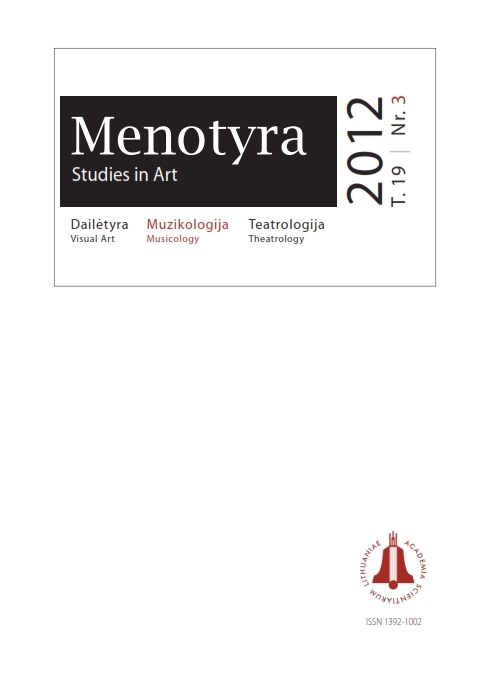Vakarų Europos vargonų statybos tendencijos Lietuvos
vargondirbystėje XIX a. pabaigoje – XX a. pirmojoje
pusėje: romantinių vargonų skambesio ypatumai
General European tendencies of organ-making craft in Lithuania at the end of the 19th century–first half of the 20th century: peculiarity of romantic organ
Author(s): Eglė Šeduikytė-KorienėSubject(s): Fine Arts / Performing Arts, Music
Published by: Lietuvos mokslų akademijos leidykla
Keywords: Romantic organ-making craft tradition; early; mature; late Romanticism; independent system of manuals; organ-orchestra; characteristic Romantic registers; Romantic organ disposition
Summary/Abstract: Integration of the tendencies of the Western European organ art is clearly reflected in the Lithuanian organ-making craft at the end of the 19th century-first half of the 20th century. The general view of the organs covers the instruments produced not only during the period under consideration but also the organs built in the 17th–18th centuries. In the second half of the 20th century rapidly developing machinery had dual importance in the development of organ-making: a rapid method of manufacturing made it easier for organ producers to build the instrument but made an individual sound of organs similar. In the 19th century the organ-making craft in Western Europe was marked by obvious changes: orchestra became the image of the organ, the werk principle that was refined in the Baroque epoch was changed by an independent system of manuals which imitated groups of orchestra instruments, and establishment of electro-pneumatic tracture (1873) allowed the use of the so-called free combinations. The above-mentioned changes reached the Lithuanian organ-making craft at the end of the 19th century and formed a peculiar format. The register tones of the organ that imitated orchestral string and wind instruments produced by Lithuanian masters were softer and thus closer to the voice of a person and choral sound. Instruments produced by the most famous Lithuanian organ manufacturers of the end of the 19th century and the beginning of the 20th century, Juozapas Radavičius (1835?–1908?), Martynas Masalskis (1858–1954) and Jonas Garalevičius (1871–1943), are characterized by apparent integration of the traditions of the era of the Western European Romantic organ-making craft: eight-foot registers prevailed in the disposition of an independent system of manuals, specific Romantic voices. The époque of romanticist organ-orchestra establishment in Lithuania coincided with the Cecilian reform of ecclesiastical music that had already been started. This intersection had several aspects: after the organ became the only instrument allowed in church liturgy, it promoted organ building and maintenance but limited artistic capabilities of the instrument and did not allow implementing all peculiarities of the rich orchestra sound in organ-making craft. The ideas spread by the “Organ Movement” (Orgelbewegung) founded in Germany after World War I (1925) reached the Lithuanian culture of organ-making craft in the seventh decade of the 20th century.
Journal: Menotyra
- Issue Year: 19/2012
- Issue No: 3
- Page Range: 217-229
- Page Count: 13
- Language: Lithuanian

